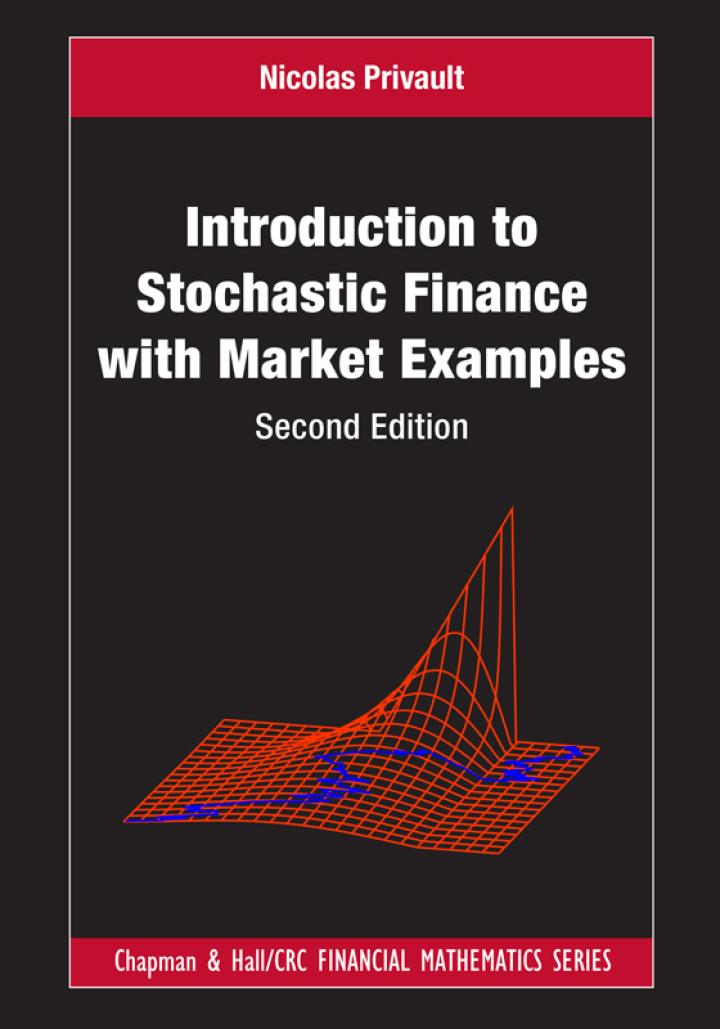Consider the backward induction relation, i.e. [ widetilde{v}(t, x)=left(1-p_{N}^{*}ight) widetilde{v}left(t+1, xleft(1+a_{N}ight)ight)+p_{N}^{*} widetilde{v}left(t+1, xleft(1+b_{N}ight)ight), ] using the renormalizations
Question:
Consider the backward induction relation, i.e.
\[
\widetilde{v}(t, x)=\left(1-p_{N}^{*}ight) \widetilde{v}\left(t+1, x\left(1+a_{N}ight)ight)+p_{N}^{*} \widetilde{v}\left(t+1, x\left(1+b_{N}ight)ight),
\]
using the renormalizations \(r_{N}:=r T / N\) and
\[
a_{N}:=\left(1+r_{N}ight)(1-|\sigma| \sqrt{T / N})-1, \quad b_{N}:=\left(1+r_{N}ight)(1+|\sigma| \sqrt{T / N})-1
\]
of Section 3.6, \(N \geqslant 1\), with
\[
p_{N}^{*}=\frac{r_{N}-a_{N}}{b_{N}-a_{N}} \quad \text { and } \quad p_{N}^{*}=\frac{b_{N}-r_{N}}{b_{N}-a_{N}}
\]
a) Show that the Black-Scholes PDE of Proposition 6.1 can be recovered from the induction relation when the number \(N\) of time steps tends to infinity.
b) Show that the expression of the Delta \(\xi_{t}=\frac{\partial g_{\mathrm{c}}}{\partial x}\left(t, S_{t}ight)\) can be similarly recovered from the finite difference relation (3.19), i.e.
\[
\xi_{t}^{(1)}\left(S_{t-1}ight)=\frac{v\left(t,\left(1+b_{N}ight) S_{t-1}ight)-v\left(t,\left(1+a_{N}ight) S_{t-1}ight)}{S_{t-1}\left(b_{N}-a_{N}ight)}
\]
as \(N\) tends to infinity.
Data from Proposition 6.1


Step by Step Answer:

Introduction To Stochastic Finance With Market Examples
ISBN: 9781032288277
2nd Edition
Authors: Nicolas Privault





